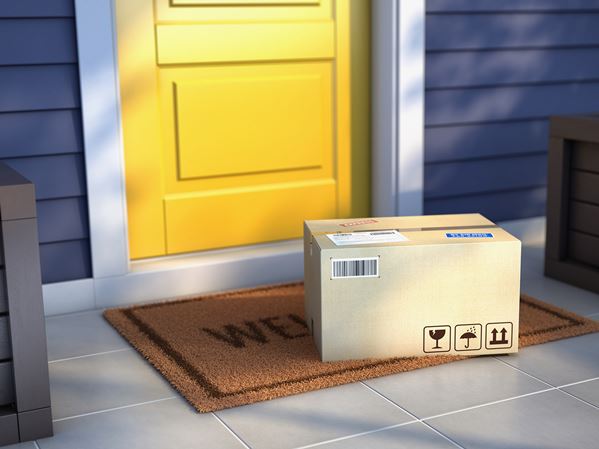
Customer expectations around delivery are changing. As we increase our online shopping frequency and continue to accelerate the shift to e-commerce, our understanding of the new normal is evolving.
No longer does a three to five-day delivery window suffice. Instead, next day or even same-day delivery is becoming sought after. It’s now a point of differentiation.
At the same time, we want a choice over where couriers leave our deliveries. Having spent 18 months locked behind doors, we’re now getting out and about – and with that comes a need for flexibility. This movement has also highlighted a consumer requirement for improved communications. In 2021 38% of adults in the UK received the dreaded “sorry we missed you” card through their door – despite being home at the time. This is frustrating, and customers and retailers can only resolve it through improved communication with each other.
What can retailers do to solve these issues that plague last-mile delivery, and what can customers expect as we look ahead over the next five years?
Sustainability takes on a larger role
Environmentally aware consumers will see that the current delivery system is unsustainable. We expect that the number of packages we’re likely to order will treble by 2030. This means triple the number of deliveries and triple the amount of pollution. Still, we can already see examples of more sustainable delivery methods.
Our takeaway food deliveries rarely get to us by car. Bikes and electric scooters have proven to be the fastest and most efficient way of navigating larger cities. With this, the use of electric vehicles is already on the rise for package delivery. Still, it will soon become standard as consumers want to see courier companies taking responsibility for their emissions.
The use of data in driver recruitment
Driver analytics will allow couriers to expel those doing a poor job and hurting their brands. Quality will become just as important as quantity, leaving horror stories of packages thrown over the gate or left out in the rain as a memory. This will allow recipient perception of the delivery industry to transition from negative to positive. A search across social media platforms for the dialogue between customers and top UK courier companies reveals just how negative an experience customers are having.
Monitoring over 8,000 tweets from customers toward courier services from DHL to Hermes, we found that 83% of all tweets to the UK’s top courier companies are negative. One of the most significant issues across most regions was late delivery, with other issues such as misplaced packages and deliveries to the wrong address also driving customer complaints. This highlights that the delivery system still has room for improvement and that couriers still need to address various areas By monitoring how each driver is working and delivering, retailers and couriers will pinpoint these issues and mitigate the consequences more quickly and efficiently.
An increase in booking ‘delivery slots’
We may also start to see a more standardised process when it comes to delivery. Food deliveries in the UK are all based on a booking system. Customers can have their delivery at a convenient time. This leads to less missed deliveries and is more efficient for the drivers as they shouldn’t need to return to an address.
Royal Mail now offers a similar service for packages where you can choose a time that you will be available to sign for the delivery. This helps set realistic targets for drivers – as a booking system would allow them adequate time to drop off each delivery. With each customer not only knowing but actively choosing their timeslot, they’ll be prepared to receive their package.
New and improved delivery communications
Currently, every courier operates differently. Sometimes you’ll receive a text to let you know your delivery is coming. Other times you may get an email, phone call or not hear anything about your delivery until it’s at your door. Some couriers may operate through an app that lets you track how close your driver is. There’s no consistency with how we receive our updates.
This is an area of last-mile delivery that could boost customer experience and driver efficiency if improved. If customers knew how and where to reach them, their driver could leave the package in an agreed location with neighbours or ask for a rescheduled delivery without the wasted time of courier drivers.
Through technological innovation, last-mile delivery has made some progress over the past decade, but there is still a long way to go. We can’t predict the future, but we can plan for what we want it to be by considering changing consumer needs and desires.. Last-mile delivery, as it stands, is inadequate for drivers, retailers and the customer – we need to fix it.
About the Author
 Jack Underwood is Founder and CEO of Circuit. Circuit is the best way to manage your delivery operations. Everything you’ll need to create routes, track packages, manage drivers and delight your customers.
Jack Underwood is Founder and CEO of Circuit. Circuit is the best way to manage your delivery operations. Everything you’ll need to create routes, track packages, manage drivers and delight your customers.




